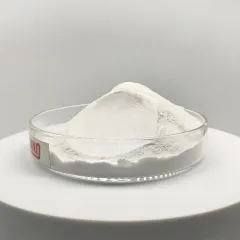- Home
- Products
- Elementary
- Boride Powder
- 3D Printing Powder
- Sulfide Powder
- Oxide Powder
- Carbide powder
- Nitride Powder
- Silicide Powder
- Hydride Powder
- Telluride Powder
- Selenide Powder
- Stearic Acid Series
- Phosphide Powder
- Nanoparticles
- Metal Alloy
- MAX Phase
- Lithium Battery Anode
- Surfactant
- Molecular sieves
- Concrete Admixtures
- Cladding of metals
- News
- Blog
- Contact
- About
Maltodextrin
Maltodextrin is only to be used with water reducers and pumps agents. This concrete retarder can defer the hydration of cement, allowing concrete to move from the station onto the site when it's needed.
Description ofMaltodextrin :
Chemical structure: maltodextrin is a macromolecular polysaccharide formed by the polymerization of many maltose molecules. Each maltose molecule is formed by two glucose molecules connected by α-1, 4-glucoside bonds, and multiple maltose molecules are connected by α-1, 6-glucoside bonds to form a complex polymer.
Water solubility: maltodextrin has good water solubility. When mixed with water, it forms a transparent, viscous solution. This solution usually has a high viscosity, similar to the properties of starch solutions.
Stability: maltodextrin shows good stability under high temperature and low humidity conditions. It is not easily decomposed at high temperatures and does not undergo the Maillard reaction, so that it can be used in foods processed at high temperatures. In addition, maltodextrin will not crystallize under low humidity conditions and has good stability.
Taste and flavor: maltodextrin has a mild sweetness and taste without irritation. It is slightly less sweet than sucrose but similar to glucose. Because of its good water solubility, it can form a uniform distribution of sweetness in the food, making it taste softer.
Nutritional benefits: Maltodextrin is a nutrient-rich carbohydrate that provides energy, promotes intestinal health and more. It is also a low glycemic index (GI) carbohydrate, suitable for people with diabetes.
Processing characteristics: maltodextrin has many applications in food processing. It can be used as a thickening agent, moisturizer, stabilizer, etc. Due to its good water solubility and high stability, it can be well-compatible with other ingredients and improve the texture and stability of food.
Health benefits: Maltodextrin is a low glycemic index carbohydrate that helps control blood sugar levels and reduces insulin secretion and fat accumulation. In addition, it can be used as a source of dietary fiber to promote intestinal health and prevent constipation.
Tolerance: Maltodextrin is generally well tolerated. Most people can digest and absorb maltodextrin without adverse reactions. However, for some people, maltodextrin may cause allergic reactions or intolerance symptoms.

Technical Parameters
Maltodextrin
| Items | Appearance | DE Value (%) | Moisture (%) | Solubility | PH Value | Sulfate Ash (1%) | |
| Standard | Yellow or white | >=99.0 | <=0.01 | <=0.001% | 4.5-6.5 | <=0.6 | |
Applications of Maltodextrin :
Water solubility: maltodextrin has good water solubility and can form a transparent and viscous solution. This solution usually has a high viscosity, similar to the properties of starch solutions. This water-solubility allows maltodextrin to be used as a thickener, humectant and stabilizer in food processing.
Stability: maltodextrin shows good stability under high temperature and low humidity conditions. It is not easily decomposed at high temperatures and does not undergo the Maillard reaction, so that it can be used in foods processed at high temperatures. In addition, maltodextrin will not crystallize under low humidity conditions and has good stability. This stability gives it a wide range of applications in food and other fields.
Sweetness and taste: maltodextrin has a mild sweetness and taste without irritation. It is slightly less sweet than sucrose but similar to glucose. Because of its good water solubility, it can form a uniform sweet distribution, making the food taste softer. This sweetness and taste properties make it sound like a sweetener and taste modifier in food processing.
Nutritional benefits: Maltodextrin is a nutrient-rich carbohydrate that provides energy, promotes intestinal health and more. It is also a low glycemic index (GI) carbohydrate, suitable for people with diabetes. In addition, maltodextrin can also be used as a source of dietary fiber to promote intestinal health and prevent constipation. This nutritional value makes it widely used in food and other fields.
Production Method of Maltodextrin :
Preparation of raw materials: The raw materials of maltodextrin are mainly carbohydrates such as starch and sugar. According to the production needs, select the appropriate starch and sugar and ensure the quality and purity of raw materials.
Liquefaction: Hydrolysis of starch to dextrin is one of the critical steps in the production of maltodextrin. In the liquefaction process, starch is hydrolyzed into small sugars such as maltose and glucose under the action of α-amylase. This step results in a viscous liquid.
Saccharification: In the saccharification process, the maltose in the liquefied solution is further hydrolyzed to glucose. This step can be performed under acidic conditions using catalysts such as glucose oxidase.
Extraction and concentration: the solution after saccharification is extracted and concentrated to obtain a high-concentration maltodextrin solution. It can be extracted and concentrated by evaporation, ion exchange and other methods.
Drying and packaging: The concentrated maltodextrin solution is dried and packaged to obtain the final product. The drying method can be spray drying, vacuum drying, etc., and the packaging is selected according to the product form and user needs.
Be aware of the following:
Maltodextrin
1. The product is biodegradable and not toxic, non-toxic, harmless, edible, but it cannot be eaten.
2. You should rinse it with lots of water if it gets in your eyes.
3. A doctor should be consulted immediately if allergies are caused to an organ of the body.
Inquiry us
PREVIOUS Concrete Admixtures
Sodium Gluconate
NEXT Concrete Admixtures